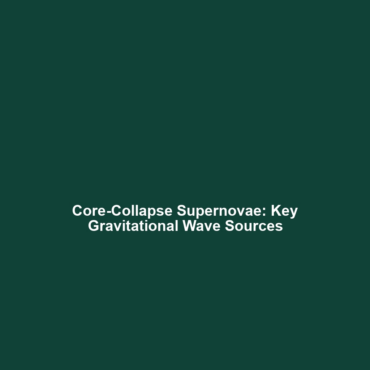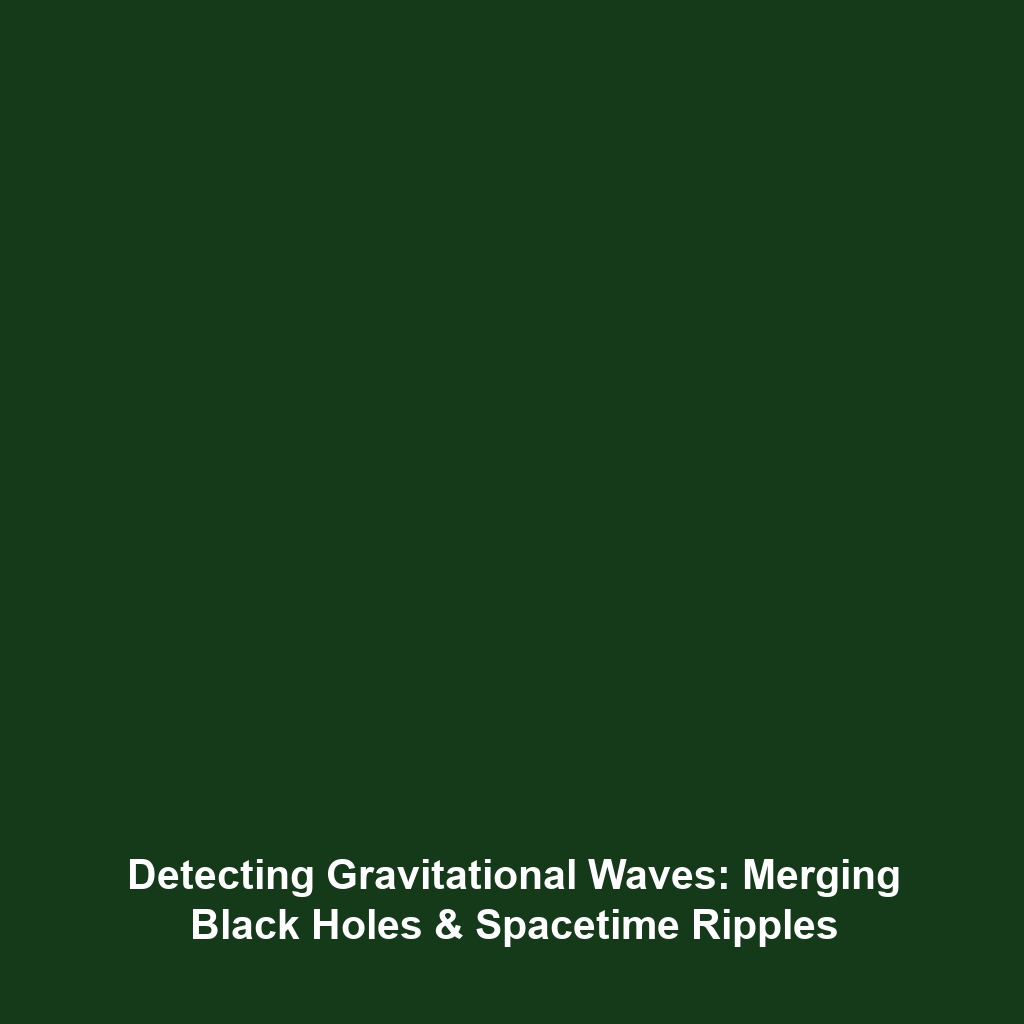Core-Collapse Supernovae as Potential Gravitational Wave Sources
Introduction
Core-collapse supernovae represent a significant astrophysical phenomenon that marks the violent death of massive stars. As the core of a star collapses under its own gravity, it unleashes a titanic explosion, scattering heavy elements across space. This event not only enriches interstellar matter but also serves as a potential source of gravitational waves. Gravitational waves, ripples in spacetime caused by massive accelerating bodies, provide critical insights into the universe’s behavior, making core-collapse supernovae a vital area of study within gravitational wave astronomy.
Key Concepts
Understanding Core-Collapse Supernovae
Core-collapse supernovae occur when a massive star exhausts its nuclear fuel, leading to structural failure and rapid collapse. The ensuing explosion can produce a wide range of phenomena, including neutron stars or black holes. This collapse generates significant asymmetries and rapid motions within the star, contributing to the production of gravitational waves.
Gravitational Waves and Their Sources
Gravitational waves are generated by various astrophysical events, with core-collapse supernovae emerging as promising sources. The waves produced during such explosions carry information about the dynamics of mass under extreme conditions, making them critical for understanding both the supernova process and the fabric of spacetime itself. Understanding these sources expands our knowledge within the broader context of gravitational waves, allowing researchers to probe deeper into cosmic phenomena.
Applications and Real-World Uses
Core-collapse supernovae play a pivotal role in gravitational wave research, particularly concerning their applications in the field:
- Detection of Gravitational Waves: Advanced LIGO and Virgo observatories are equipped to detect waves from supernovae, providing key data for astrophysical research.
- Astrophysical Modeling: The study of these events helps improve models of stellar evolution and the lifecycle of galaxies.
- Understanding Element Formation: Core-collapse supernovae are responsible for creating and distributing heavy elements, which is crucial for understanding cosmic chemical evolution.
Current Challenges
While the study of core-collapse supernovae as gravitational wave sources is advancing, several challenges remain:
- Difficulty in predicting the precise mechanisms that lead to gravitational wave emissions during a supernova event.
- Limited observational events lead to incomplete data sets for robust statistical analysis.
- Technological limitations in current gravitational wave detectors, requiring enhancement for better sensitivity.
Future Research and Innovations
The future of gravitational wave detection and the study of core-collapse supernovae looks promising, with several upcoming innovations expected to yield breakthroughs:
- Next-Generation Detectors: Projects like the Einstein Telescope and Cosmic Explorer aim to provide greater sensitivity and broaden the frequency range of detections.
- Multi-Messenger Astronomy: Combining gravitational wave data with electromagnetic observations will enhance our understanding of supernovae and their progenitors.
- Theoretical Models: Improved theoretical frameworks to simulate core-collapse processes and predict gravitational wave signals more accurately.
Conclusion
Core-collapse supernovae stand as significant potential sources of gravitational waves, offering insights into the death throes of massive stars and the nature of spacetime. Continued research and technological advancements in this field will not only enhance our understanding of these cosmic events but also contribute to the broader knowledge of gravitational wave phenomena. For those interested in further exploring the intricate relationships within astrophysics, check out our other articles on gravitational wave detection and supernova dynamics.
This -formatted article covers core-collapse supernovae as potential gravitational wave sources, maintaining a focus on SEO and readability, while providing comprehensive information across various relevant subtopics.

